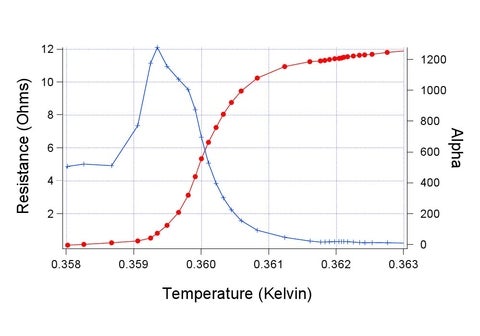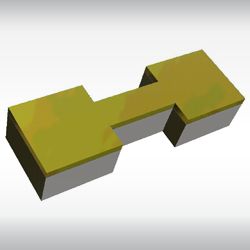A superconducting transition edge sensor (TES) can be used to make the most sensitive thermometer which operates in a very narrow temperature range (<5mK). A TES takes advantage of the very sharp transition from normal resistance to superconductivity. Within this transition a very small variation in temperature corresponds to a large change in resistance. When the sensor is thermally balanced at the transition temperature, it can be used to detect very small temperature fluctuations. In order to select an operating temperature, a TES is fabricated with a thin film of normal and superconducting metal. Due to the proximity effect, their relative thicknesses determines the critical temperature of the bi-metal. TES's have many advantages over other thermometers. For example, the TES's size is useful when working in low temperature physics where space is limited in dilution refrigerators and other cryogenic apparatus. TES's are highly sensitive to variations in temperature and energy, the TES's fabricated in our lab are able to measure changes in energies on the order of 10-19J, which is many orders of magnitude better than conventional techniques. High accuracy is important for sensitive measurements, as well as low noise. The TES's made in our group have a noise sensitivity of of less than 1nK/sqrt(Hz). A TES can be used anywhere a high energy sensitive sensor is required, it can be used as a calorimeter to measure a heat change or as a bolometer to detect power absorption.
A TES can be described by four characteristics known as the normal state resistance, the critical temperature, the transition width and the alpha parameter. All of these parameters are used to compare sensors. Alpha is a dimensionless coefficient which defines the sharpness and sensitivity of the superconducting-to-normal transition. This dimensionless temperature coefficient is a function of bias current, applied magnetic field, and temperature (bias point) within the phase transition. Practical values are in the range of 40-500 and have found to be as high as 2500. Our sensors have alphas as high as 1200 here at Waterloo.

Sample data

Transition edge sensor